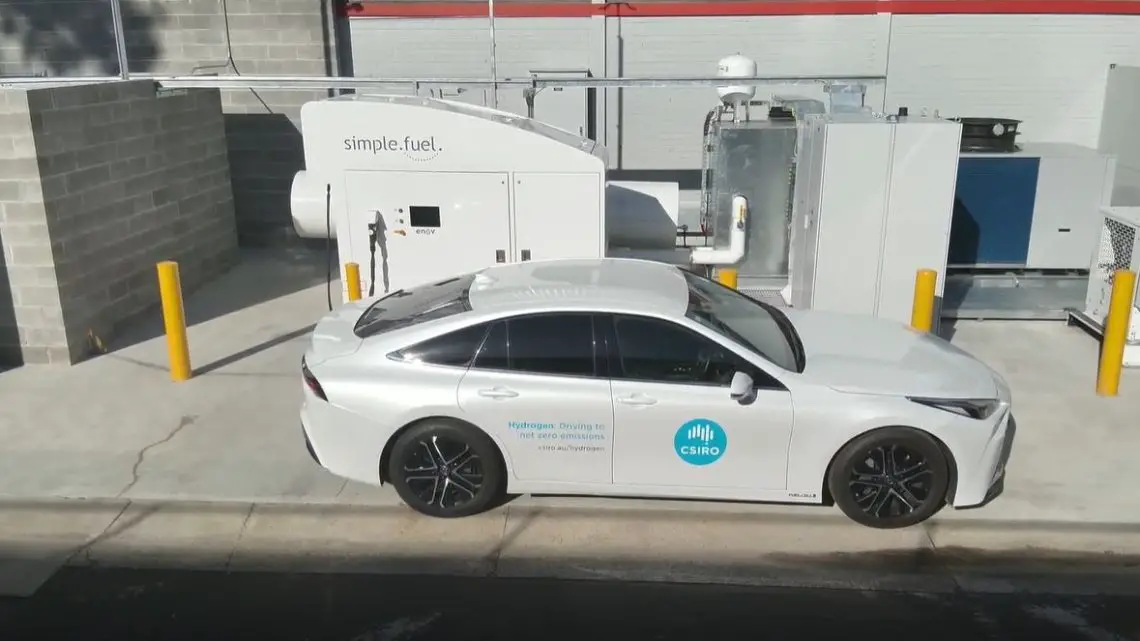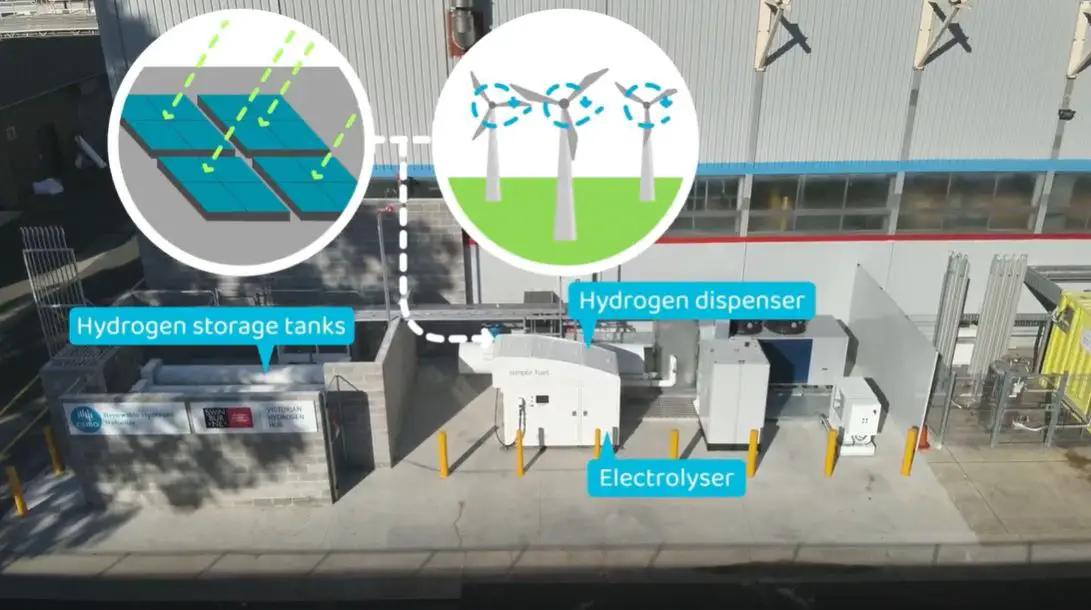
Not your average hydrogen station, CSIRO launches groundbreaking facility in Australia
December 5, 2023The new renewable H2 refueling station has been designed for more than refueling.
A new state-of-the-art green hydrogen station has been launched by CSIRO and Victorian Hydrogen Hub. Not just an H2 refueling station, the $2.5 million facility has been purpose-built to carry out hydrogen research, test H2 technology and train the next generation on the use of H2 stations.
Showcasing the real-world application of hydrogen.
The green hydrogen station unveiled by Australia’s national science agency, Commonwealth Scientific and Industrial Research Organisation (CSIRO), and Swinburne University of Technology’s Victorian Hydrogen Hub (VH2), is located at CSIRO’s Clayton site in Victoria.
The refueling station can reportedly produce as much as 20 kilograms of green hydrogen daily through renewable power and electrolysis. As for its storage capabilities, it has a capacity of 80 kilograms. This is enough fuel for more than 10 hydrogen cars. It takes, on average, six minutes for a car to refuel and H2-powered vehicles can travel more than 600 kilometers (372.8 miles) on a full tank.
Displaying the real-world application of hydrogen, the innovative hydrogen station will be used to demonstrate hydrogen’s effectiveness for transport. Additionally, it will be utilized to test emerging H2 tech and train the next generation on how to use these stations to make certain that Australia remains globally H2 competitive.
The hydrogen station is an important part of CSIRO’s Hydrogen Industry Mission.
The goal of this mission is to support both national and world decarbonization via leading research and the development of an Australian hydrogen fuel industry that is commercially viable, including domestic and export chains.

The refuelling station uses green hydrogen produced with electricity from renewable sources – Image Source: CSIRO
“This is innovative, inventive, inspired technology that builds the sovereign capabilities Australia needs to transition to net zero,” said Dr. Doug Hilton, CSIRO Chief Executive.
Hilton added that hydrogen will play a significant role in the country’s energy transition and the decarbonization of its road transport sector. It will also deliver “long-term community and environmental benefits, boost the economy and create new jobs and opportunities for Australia and Australians.”
An expanding H2 ecosystem.
 “Hydrogen plays a key part in our transition to clean energy,” said Professor Karen Hapgood, Deputy Vice-Chancellor Research, Swinburne University of Technology. “Demonstration projects such as these help to test technical, regulatory and economic aspects of hydrogen refuelling infrastructure, and support the urgent training and workforce development for this expanding hydrogen energy ecosystem.”
“Hydrogen plays a key part in our transition to clean energy,” said Professor Karen Hapgood, Deputy Vice-Chancellor Research, Swinburne University of Technology. “Demonstration projects such as these help to test technical, regulatory and economic aspects of hydrogen refuelling infrastructure, and support the urgent training and workforce development for this expanding hydrogen energy ecosystem.”
Hapgood added that this latest hydrogen station brins the nation one step closer to “creating a carbon neutral world by 2050 or earlier.”
At present, there are 12 hydrogen stations either in operation or being built in Australia, with the Toyota Mirai and the Hyundai Nexo being the only hydrogen passenger car models available for purchase in the country.
Ready to test your knowledge on the most abundant element in the universe? Take our fun and engaging Hydrogen Quiz now!



 HFN News is your leading source for fresh hydrogen and renewable energy updates. Amid the fast-paced growth of hydrogen companies, we provide top-notch news and insights about this exciting sector. Our coverage spans from hydrogen cars to global sustainable initiatives, and we highlight the latest in green jobs and developing hydrogen hubs. We invite you to share your local hydrogen news and explore today’s renewable energy job listings on our site. Thanks for choosing HFN News as your trusted guide to the hydrogen and renewable energy world!
HFN News is your leading source for fresh hydrogen and renewable energy updates. Amid the fast-paced growth of hydrogen companies, we provide top-notch news and insights about this exciting sector. Our coverage spans from hydrogen cars to global sustainable initiatives, and we highlight the latest in green jobs and developing hydrogen hubs. We invite you to share your local hydrogen news and explore today’s renewable energy job listings on our site. Thanks for choosing HFN News as your trusted guide to the hydrogen and renewable energy world!
Very Interesting,what would be good to know is how much electricity is needed to make that 20kg of hydrogen.
Perhaps you could ask that question and give answer on another article,